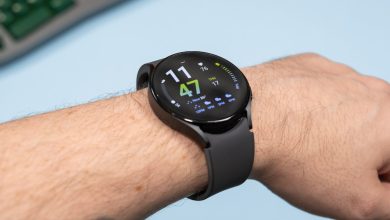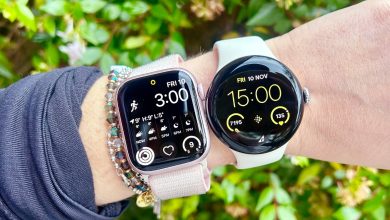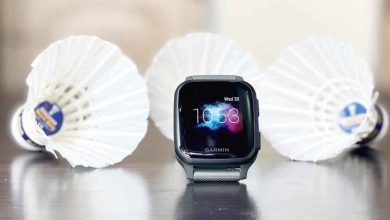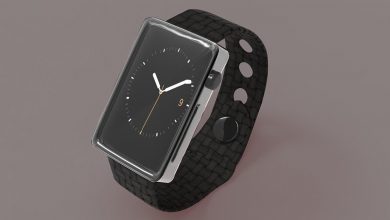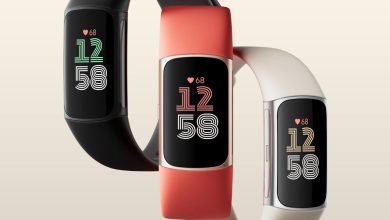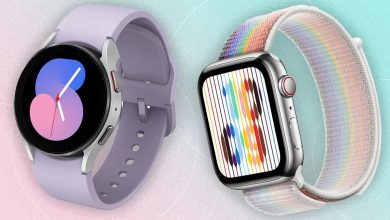New 2024 Polar Grit X2 Pro Price, Full Review And Big Upgrades
 The Polar Grit X2 Pro, the company’s newest flagship watch, was just unveiled. The Polar Grit X series is made with better materials and has a more robust case than the Polar Vantage V series, but it still has the same functions. One crucial backcountry feature was absent from the previously mentioned adventure-focused Grit X series: offline maps.
The Polar Grit X2 Pro, the company’s newest flagship watch, was just unveiled. The Polar Grit X series is made with better materials and has a more robust case than the Polar Vantage V series, but it still has the same functions. One crucial backcountry feature was absent from the previously mentioned adventure-focused Grit X series: offline maps.
Together with enhanced heart rate monitoring, dual-frequency GPS, global offline maps, and an AMOLED display, the Grit X2 Pro also has these features.Consequently, Polar and the rest of the industry were able to solidify their rapid shift from MIP to AMOLED panels.
Polar Grit X2 Pro Price
The Polar Grit X2 Pro was introduced in March 2024 and retails for a suggested price of $749.95/£649/AU$1,099, straight from Polar US, Polar UK, and Polar AU. There are two color options: Stone Gray and Night Black. For $869.95/£749/AU$1,299, the watch is also offered with a titanium casing and bezel. Other than being lighter, the Polar Grit X2 Pro Titan is the same as the regular variant. I gave this model a test. Read More – Garmin Fenix 8 Pro Solar 2024 – (Updated): Price & Release Date
Polar Grit X2 Pro 2024 Specifications:
- Dimensions(W x H x T): 48.6 x 48.6 x 13.4 mm
- Weight:57 g (without band), 79 g (with band)
- Display:39” AMOLED touch screen
- Display resolution:454 × 454
- Case and bezel: Stainless steel
- Lens: Sapphire Glass
- Connectivity: Bluetooth 5.1
- Water resistance:WR100
- Battery: up to 43 hours (GPS on); up to 10 days (smart watch mode)
- Global positioning: Dual-frequency GPS
Grit X2 Pro Design and Build Quality:
Visually, the Polar Grit X2 Pro resembles the Fenix series of Garmin watches. The case’s form and bezel design are extremely similar to those of the primary competitor, but the remainder of its physical attributes are firmly in accordance with Polar’s design ethos. The five physical buttons are arranged in the style of a traditional Polar watch.

Pressing feeling is also pleasant. The 48 mm casing size of the Grit X2 Pro is comparable to that of a “medium” Fenix or Epix. The watch weighs 57 grams without the band, which is about the same as the other two watches’ respective weights of 53 and 50 grams.
At 48 grams, the Titan version weighs less. The Grit X2 Pro’s sensor architecture is based on Polar’s Elixir platform, which was first seen in the Vantage V3. The brand’s most recent biosensing invention, Elixir, has skin temperature, blood oxygen, and an ECG sensor. It also has the newest optical heart rate sensor made by the firm. Elixir wearables are compatible with one other, so you may use the Grit X2 Pro and the Sennheiser Momentum Sport together.
Many folks seem to believe that the Grit X2 Pro is ‘simply’ the Vantage V3 in robust casing because they share the same display, I suppose. With a resolution of 454 × 454 pixels, the 1.39-inch AMOLED touchscreen seems sufficiently bright under most lighting scenarios.
In contrast, the 1.3-inch screens of the Epix Gen 2 and Pro feature a resolution of 416 x 416 pixels, making them marginally smaller and less detailed. Since the Fenix range features Memory In Pixel screens, a comparison is unfair. Built to the beloved MIL-STD-810H standard, the Polar Grit X2 Pro is a robust watch that is waterproof to 100 ATMs.
A Sapphire glass lens that resists scratches shields the display. The temperature range for operation is -20 to 50 degrees Celsius (-4 to 122°F), which is appropriate for the majority of outdoor activities.
Features:
Every Vantage V3 feature is available on the Polar Grit X2 Pro. The feature sets on both are actually the same. Ultimately, the Polar Grit X2 Pro can be thought of as the Vantage V3 with a more durable casing. It should come as no surprise that the majority of the functions contained in the Fenix are also present in, example, the Garmin Forerunner 965.
But what are these characteristics? Because Polar is well-known for its recovery suite, the Grit X2 Pro boasts a number of features, including Nightly Recharge, SleepWise, and nightly skin temperature readings, that help you sleep better and reduce stress.

In the wellness section, things appear a little more limited: the lone offering is Serene, a basic breathing coach. As I mentioned in my review of Oxa Breathing Coach, breathing does, in fact, have a big impact on performance and health. Sadly, Serene is fairly basic.
The Grit X2 Pro has every test, which is one of the most well-liked aspects of Polar watches. These consist of the leg recovery test, the VO2 max-determining fitness test, the running and cycling performance tests, and the enigmatic orthostatic test. The Grit X2 Pro has an abundance of training functions, as one might anticipate, ranging from estimating training load to recommending fueling tactics.
Like Garmin’s 3D Speed, Vertical Speed computes velocity while accounting for height. VAM, or ascent speed, provides you with an estimate of “the number of meters you would climb in an hour if you maintained your current pace,” according to Polar. Trail runners are the target audience for both of these features.
Maps and Navigation:
It’s a slightly more labor-intensive approach, in typical Polar way. Since the Grit X2 Pro only has Bluetooth and no WiFi, you must use a USB cable to connect the watch to your computer in order to download the maps, which you must then move to another program.
The procedure is significantly more difficult if you’re using a Mac because you have to download the Android File Transfer program in order to view the connected watch on your computer. It’s easy enough to drag over the file, though. Even the larger regional maps lack a great deal of detail. Compared to Garmin’s, which has POI navigation and more, they are undoubtedly inferior.
The roads, buildings, and other features are visible, but the map is devoid of any labels that might aid in object identification. Positively, maps may now be accessed via the Navigation view outside of training thanks to the 2.0.19 firmware update (external link). Swipe left or right on the watch face until you are there, then tap the screen to reveal the data.
It’s excellent that there is enough storage space to download more intricate maps. Komoot and Strava are two third-party apps that allow you to create and import routes. Regarding Komoot, only routes imported from the app offer turn-by-turn navigation. Something to bear in mind.
Battery Life:
The Polar Grit X2 Pro charges quickly and has a lengthy battery life. For the latter, I was unable to locate an official number, but from my experience, you may charge the watch for ten to fifteen minutes to fully recharge the battery. The stated maximum battery life is up to 43 hours with the GPS on and up to 10 days in smartwatch mode.

One oddity with the watch is that you have to go into General Settings/Positioning satellites in the main settings menu to adjust the GPS mode—you cannot do it in the exercise mode settings. Only the General Settings/Positioning satellites menu in the main settings menu allows you to do that. Here, you get a choice between “Better accuracy” and “Power save,” the former of which, I presume, refers to multi-band GPS.
Polar Grit X2 Pro 2024 Performance:
I went for walks and runs with the Polar Grit X2 Pro during the testing phase. I also used it to track my vitals during the day and, on a few instances, to fall asleep. Nevertheless, the Grit X2 Pro is excessively large and the silicone band isn’t permeable enough to make the watch pleasant to wear all day, just like the Fenix watches.
In terms of performance, the Vantage V3 and the Grit X2 Pro are very identical (you can find out more about the Vantage V3’s performance here). Although it typically takes the watch a bit longer than the Garmin Forerunner 965 to find a signal, dual-frequency GPS is accurate.
Heart rate measurements are not always reliable. During some of my runs, the graphs generated by the two watches were extremely close (Garmin here, Polar here); on other occasions, though, the Polar’s readings were significantly higher than those of the Forerunner 965 combined with the HRM-Pro Plus (Garmin here, Polar here).
The VO2 max estimates from Polar are also regularly greater than those from other brands, which I have always found to be appealing because who doesn’t like a wearable that tells them their maximal oxygen intake is through the roof?
Joking aside, I wonder if wearing the watch continuously for a longer period of time—say, several months—would assist with this. I’m not sure, but in the previous five years or so, I’ve found that Polar wearables have been largely reliable.
